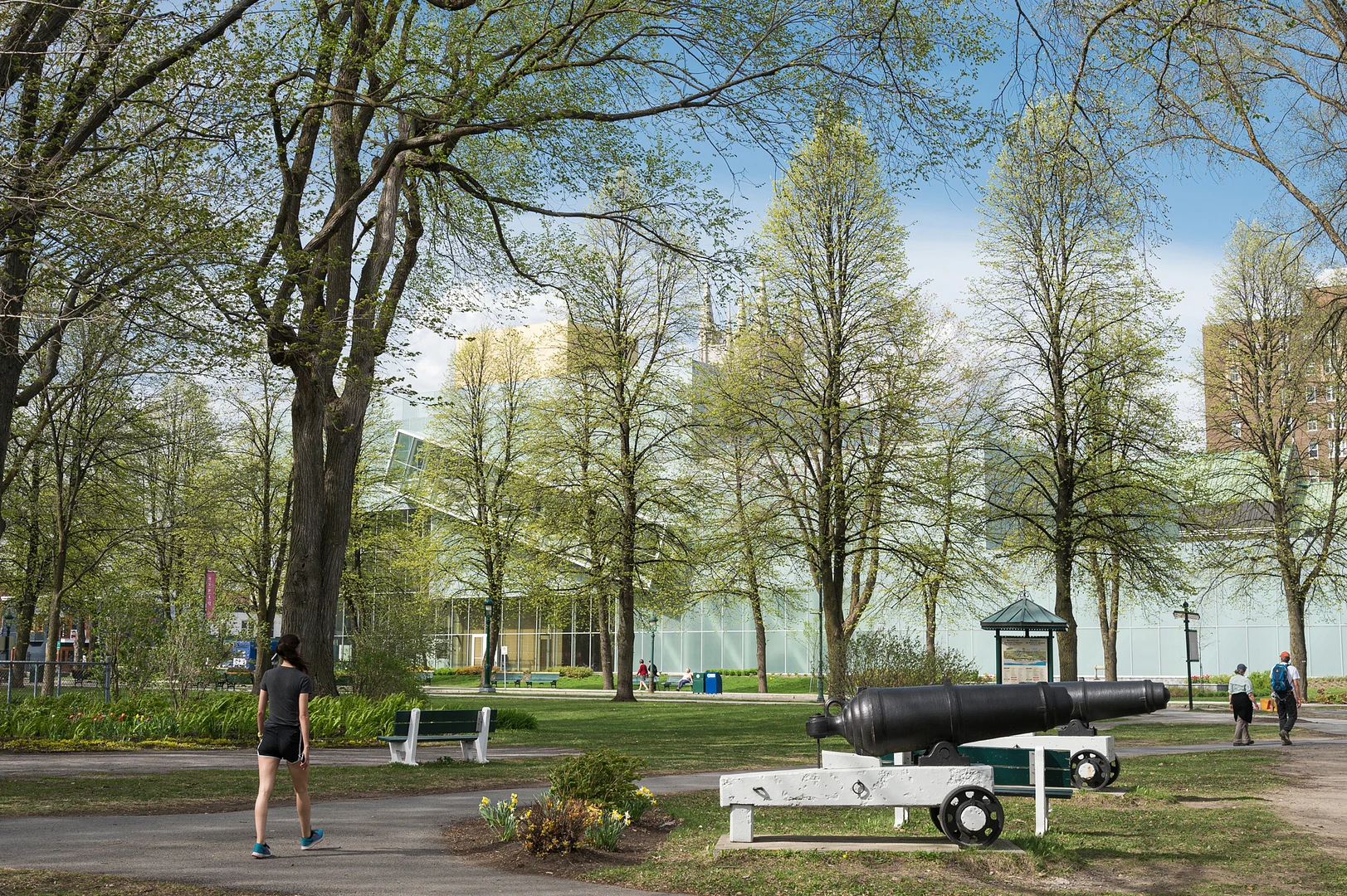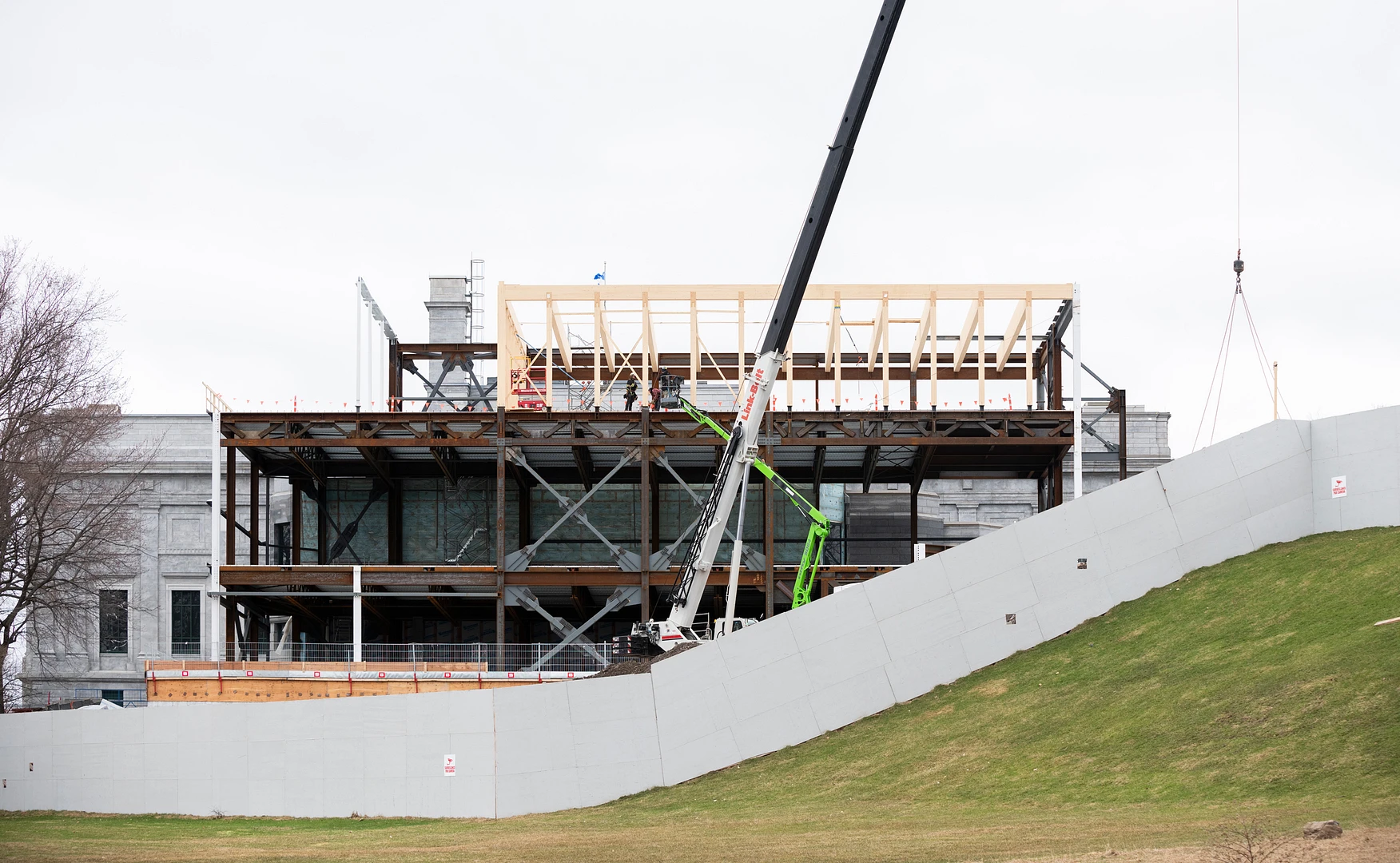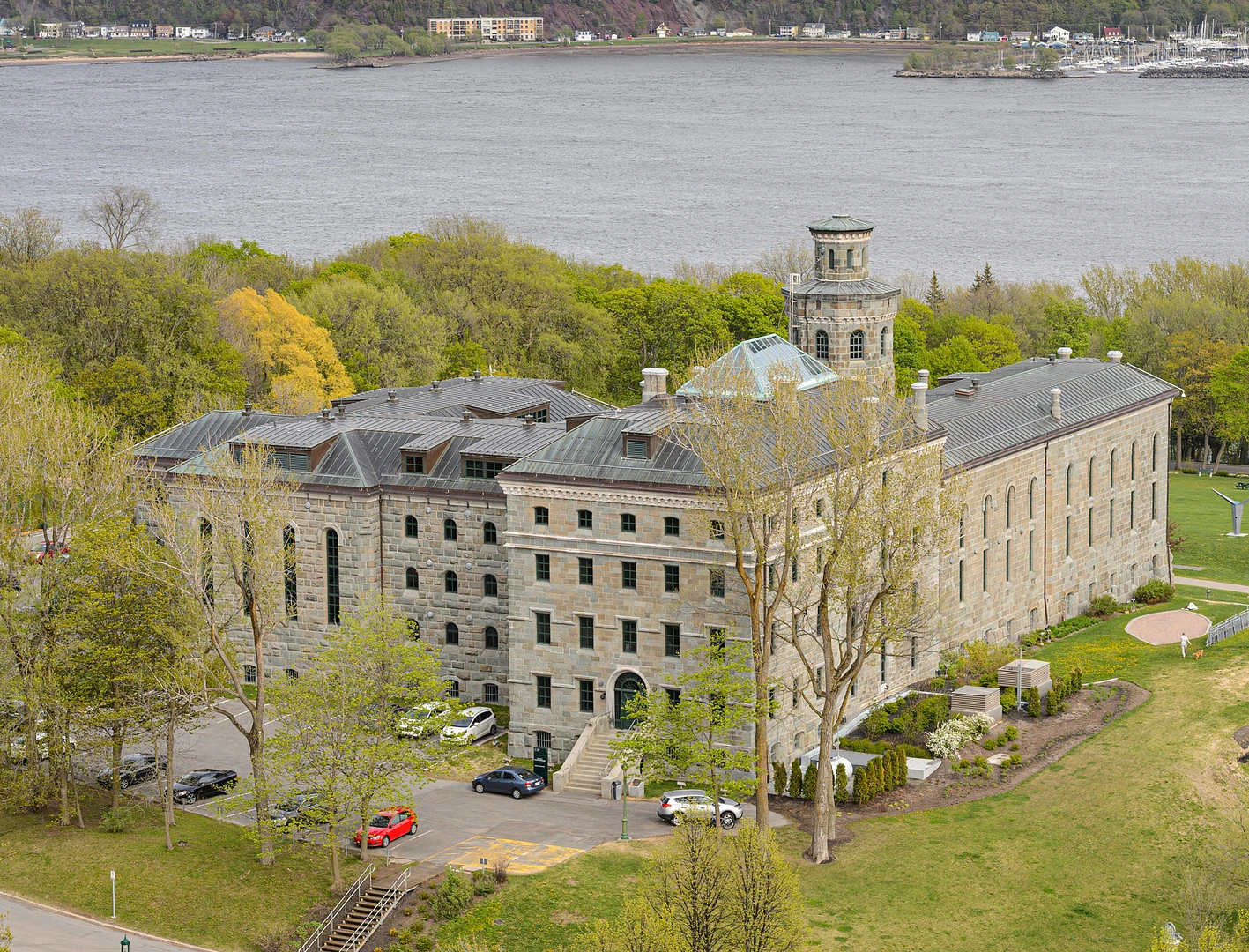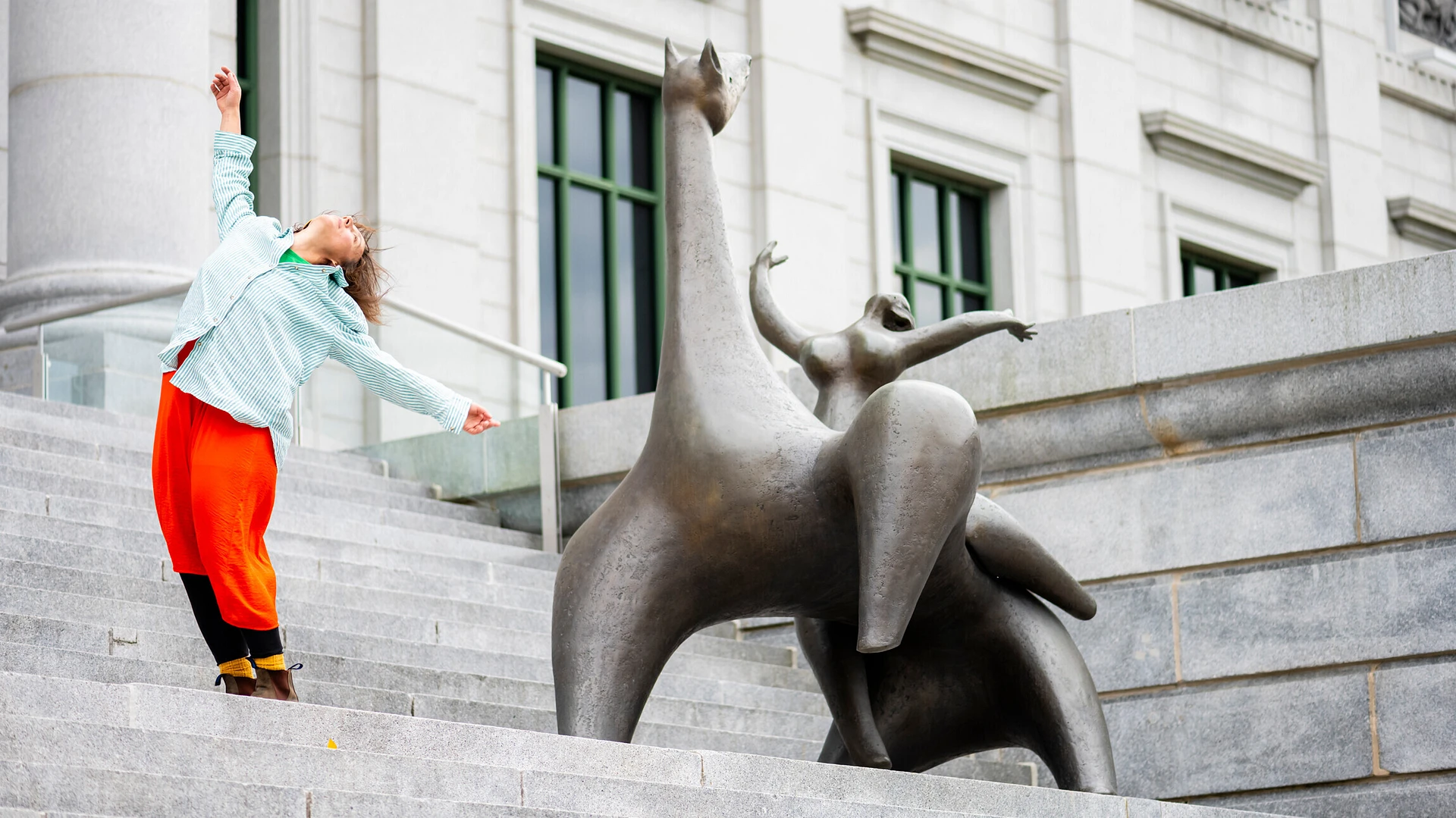The Pierre Lassonde Pavilion // Photo : Stéphane Bourgeois // Stéphane Bourgeois
Site and Architecture

An art museum in the park
In the heart of the Plains of Abraham, the Musée national des beaux-arts du Québec, one of the world’s most prestigious museums, stands out for the rich experiences it offers. Art, nature, and architecture are central to the many adventures that can be found on site.
Touring the Museum through the seasons, you’ll enjoy breathtaking views of the natural spaces that surround us and the majestic St. Lawrence River.

The Pierre Lassonde Pavilion, gateway to the museum complex
Located on Grande Allée in Québec City, the iconic Pierre Lassonde Pavilion is the gateway to our museum complex. This impressive and captivating architectural masterpiece lined with glass and bathed in natural light was created by OMA of New York and Provencher_Roy of Montréal. Marvel at the works in the contemporary art collection (post-1960), the Inuit art gallery, and the decorative arts and design gallery. To round out the experience, make the most of the treasures at the Librairie-Boutique, the delectable treats at the café, the beauty of the inner courtyard, and the activities put on in the state-of-the-art auditorium.

Towards the Espace Riopelle
Our museum complex is undergoing a major transformation. A new structure made of glass, steel, and wood will open its doors in 2026. Replacing the central pavilion, the future building will house the work of a Québec icon, artist Jean Paul Riopelle. His masterpiece, Tribute to Rosa Luxemburg, will be installed in a circular space on the top floor. Espace Riopelle will also feature innovation and novel experiences that will stir your senses and emotions. It promises to be a destination you won’t want to miss!

The Gérard-Morisset Pavilion, where it all began
With its sculpted ceilings, columns topped with capitals, and bas-reliefs on the façade, the neoclassical architecture of the Gérard-Morisset Pavilion takes you on a fabulous journey back in time. Inaugurated in 1933, the building designed by architect Wilfrid Lacroix displays works from the ancient and modern art collections, through the 350 Years of Artistic Practices in Québec exhibition. This magnificent building was the Musée’s only space until 1991.

The Charles Baillairgé Pavilion, a former prison devoted to art
The Plains of Abraham’s other emblematic building, an imposing structure perched on a bluff and topped with a turret, housed Québec City’s prison for almost a century. Québec architect Charles Baillairgé’s work was added to the Musée national des beaux-arts du Québec in 1991. Generations of parents and children visiting the building have been fascinated by the cells that bear witness to 19th-century prison life. At the time, who would have thought that his legacy would one day be reassociated with the arts and education?

A garden and its bouquet of artwork
In summer, art can be enjoyed outside as well as inside. Pieces from the Julie and Christian Lassonde Sculpture Garden dot the grounds.
You can take a walk and discover Jean Paul Riopelle’s bronze sculpture, La Tour (1969–1970, cast by Michelucci in 1974). Charles Daudelin’s La Cavalière (1963), Liberté (1995), and Repos (1949) are also sure to impress. You’ll also be able to see intriguing and delightful sculptures by Michel de Broin (Tortoise, 2012), Armand Vaillancourt (Hommage au Tiers-Monde, 1967), Bill Vazan (Event Horizon, 1989–1991), and Bernar Venet (Deux Arcs de 245,5° chacun, 1997).
This circuit of pieces set against the backdrop of the outdoors is the perfect blend of art and nature.

